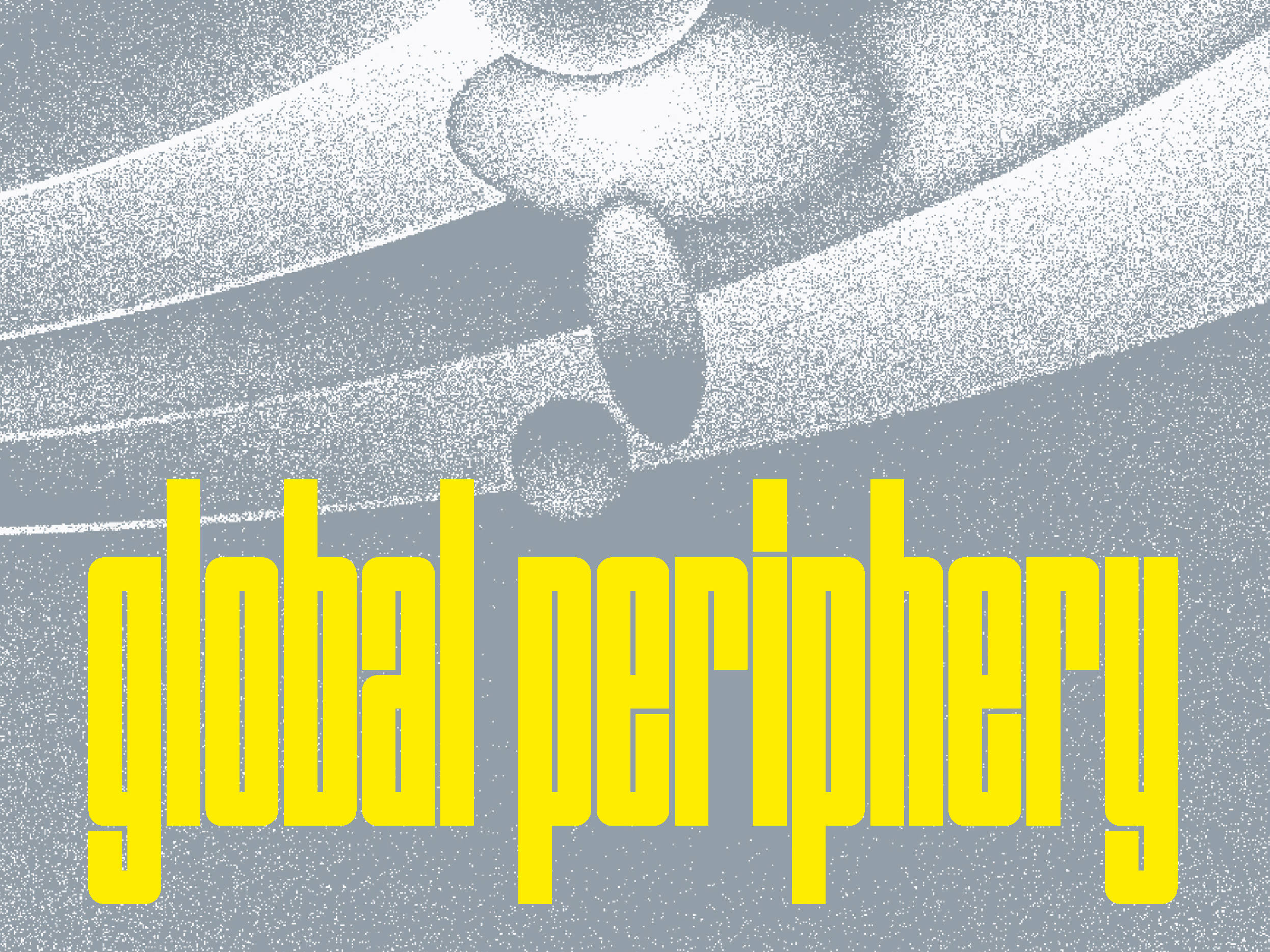
visual Perrine Serre, typography Raoul Audouin-VTF, graphic designer Jérôme Foubert
Global Periphery – Symposium participants
Frédérique Aït-Touati - How to deconstruct the imaginaries of space?
Frédérique Aït Touati
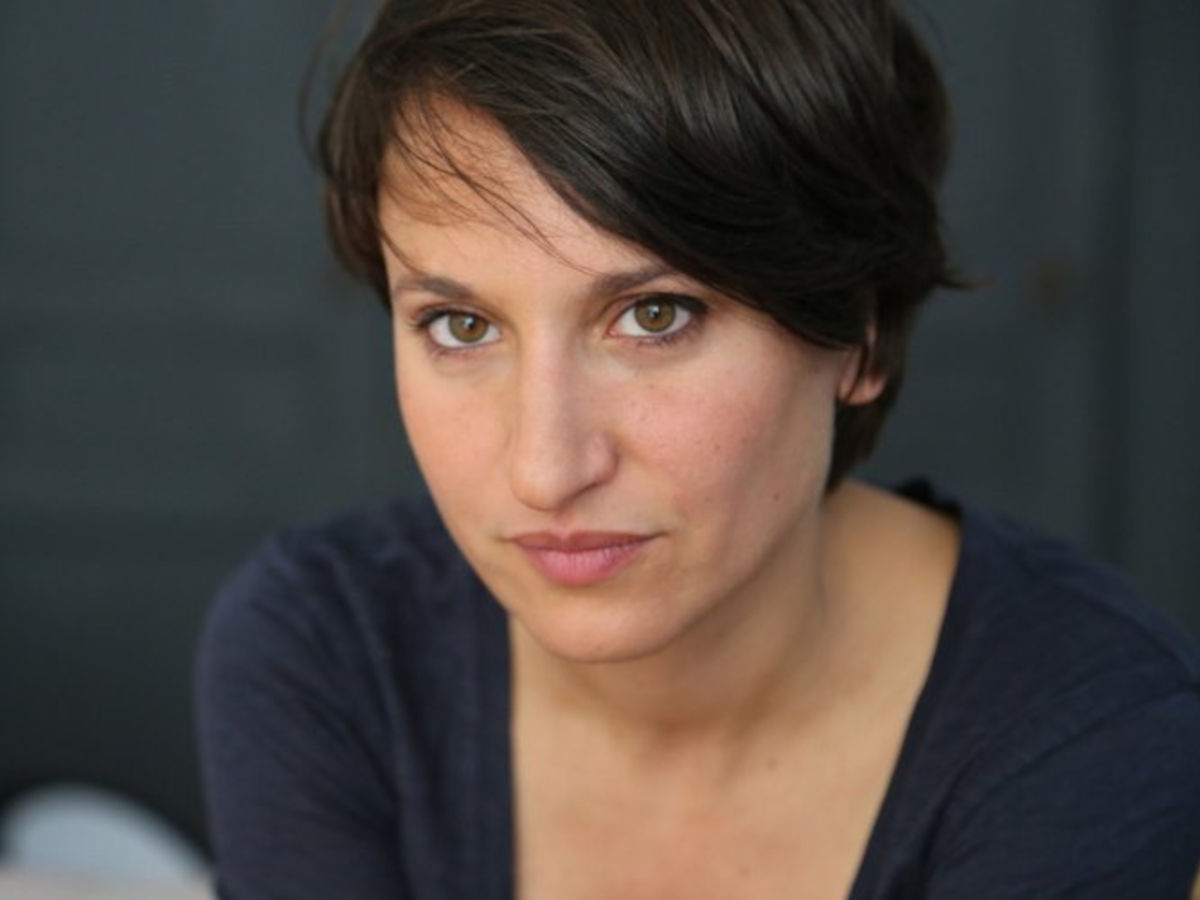
Frédérique Aït-Touati lives and works in Paris. A director and researcher at the CNRS, she explores the links between science, arts and politics and makes theater a place of experimentation. After studying literature at the ENS de Lyon, she trained
in directing in Cambridge, England, where she created her company in 2004, while pursuing a thesis in the history of science. She taught at Oxford University from 2007 to 2014 before returning to France to devote herself to research and theater. She is in residence at the Chartreuse de Villeneuve-lès-Avignon and at the Comédie de Reims from 2011 to 2013 for the Gaïa Global Circus project. From 2014, she was invited to the Nanterre-Amandiers theater with SPEAP, the experimental academy she directs. It is at the Amandiers that she has created most of her shows since: in 2015, she designed with Bruno Latour and Philippe Quesne Le Théâtre des négociations-Make it work, a week-long performance with 200 students offering an alternative negotiation on the climate. The following year she staged the conference-performance INSIDE (on tour in Berlin, Frankfurt, New York, at the Kaaitheater in Brussels and at the Criée in Marseille) then Moving Earths with Bruno Latour,revived as a play for an actor at the Théâtre de l’Odéon in 2020. In August 2020, Tino Sehgal invited him to the exhibition Down to Earth, as part of the Berliner Festspiele. She also continues to teach at the École des Hautes Etudes en Sciences Sociales and at SPEAP, as well as abroad where she teaches regularly at NYU and Oxford. She has notably published Contes de la Lune, essai sur la fiction et la sciences modernes (Gallimard, 2011) et Terra Forma, manuel de cartographie potentielle (B42, 2019).
Always further: Plus Ultra. This is the motto that Bacon gives as a program for modern science, taking up the motto of the conquering emperor Charles V. Conquest of terrestrial space, conquest of nature, conquest of cosmic space: still today, to discover is very often to conquer, to explore is to appropriate space, other planets, distant resources. The race for space programs and habitable planets, under the guise of disinterested exploration or space tourism, very often reveals a thirst for the appropriation of resources and a desire for territorial expansion. But this relationship to space as a place to be conquered is beginning to be deeply shaken. It seems that the new thinking of the earth makes it possible to look at space differently. The appropriation of territories (and their resources) has indeed become a central issue in the time of the Anthropocene. Does our new awareness of the limits of the Earth invite us to further accelerate the search for other planets to conquer, or would it, on the contrary, be an opportunity to renew our imaginations of space? It is our collective history, human and terrestrial, which is also written in part through this effort to reinvent the spatial imagination.
Can we transform the affects of exploration? rediscover a thirst for discovering and exploring other worlds, freed from the thirst for conquest? Can we consider space other than a territory to be conquered?
From this program designed for a collective residence in Marfa (Texas) in October-November 2022 as part of the Villa Albertine, Frédérique Aït-Touati offers a reflection on the renewal of the spatial imagination.
Eleanor Armstrong - Where is the place for space? Space Science in Cultural Contexts
Eleanor Armstrong
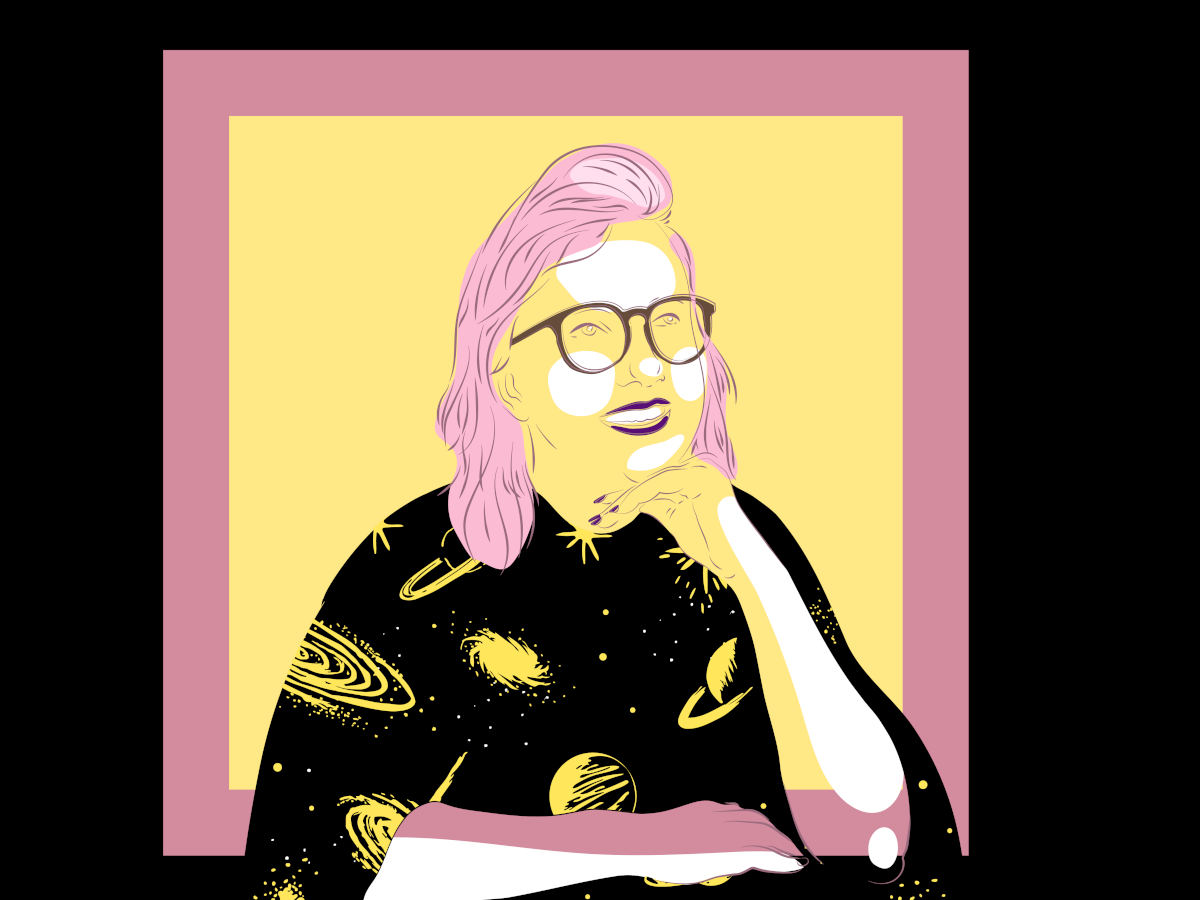
Dr Eleanor Armstrong (she/her) is a Postdoctoral Researcher at Stockholm University, where she studies the things people learn about science (and particularly space science and geology) beyond the classroom. Alongside her academic research, she is convenes Space Science in Context (on twitter: @SSIC_Tweets) a cross-discipline conference on the integration of space science and society. Dr Armstrong also works on incorporating themes of care, intimacy, and consent when talking about interplanetary sex tech futures through a design studio she co-leads EXO-MOAN (on instagram: @InSpaceNooneCanHearYouMoan). You can learn more about her work on her website or follow her on twitter.
https://ellietheelement.squarespace.com – twitter: @EllieTheElement
When we talk about space science research in public – in places like museums, on social media, in tv shows – choices are made about which information is most important. In this talk I will show how the places where space science is done are (or often not) represented, what this means for how people learn to think about space. I will then explore how we can imagine other ways of talking about what happens when doing science research in cultural contexts.
Fabiane Borges - Subjectivity, Art and Space Science
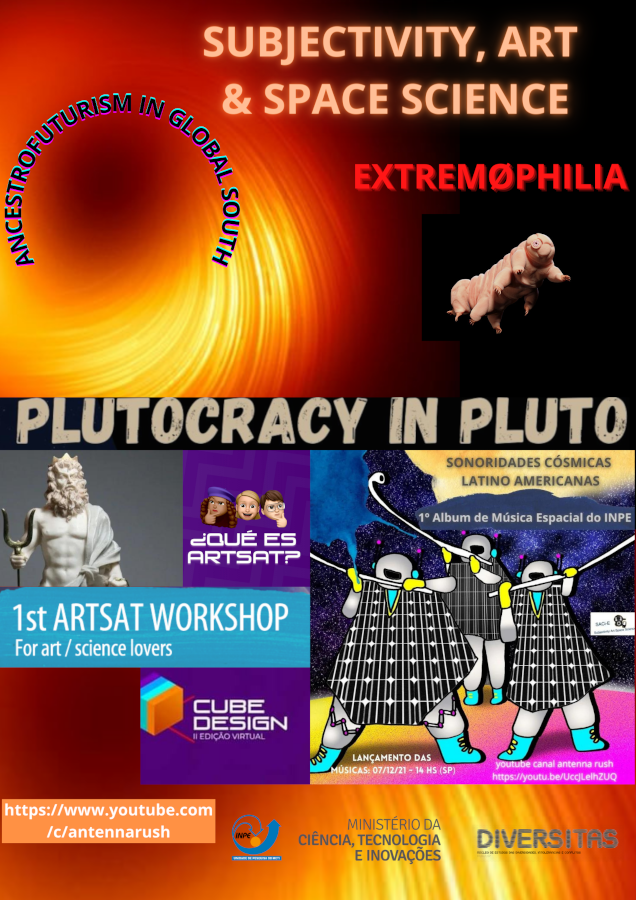
Implementation of a research nucleus in art and culture focused on the dissemination of space science and technology at INPE (National Institute for Space Research/Brazil)
In the current historical moment, we see a resurgence of interest in space as a way to expand production, transportation modes and earthly knowledge; this requires more researchers and specialists committed to representing the regional interests of Latin America and the Global South, in such a way that these regions do not become just consumers or users of these advances. In this perspective, we present art and space culture as a transdisciplinary field between art/culture and science/technology that has the task of awakening creative, imaginative and innovative aspects of the space industry and seeking new hybrids in techno-scientific development. At the beginning of this text, we partially introduce the role of space art and culture in countries such as United States and China, as well as space technology development institutes such as NASA, SETI, MIT, ESA, ESO and AENC, and organizations such as CERN (European Organization for Nuclear Research), SSP/ISU (Space Studies Program / International Space University), or federations such as ITACCUS/IAF (Committee for the Cultural Utilisation of Space / International Astronautical Federation). These programs serve as reference for us because they have experience with transdisciplinary projects between art and science. However, in industrially precarious countries like Brazil, it is necessary to make a series of adaptations and rely on the inventive skills of its populations so that it is possible to innovate in this field and achieve new results, and not just repeat the already established pattern. It is through the alliance between technological knowledge, economic investment and imaginative power arising from cultural diversity, that it becomes possible to innovate aesthetically and technologically. In this perspective, a series of activities of space art and culture of evident relevance are being carried out at INPE, and we intend to use it as a parameter for the implementation of a research center in this area at INPE itself. Here we are analyzing, for example, the workshops on the construction of artistic satellites (ArtSat) with participants from all over Latin America (2020/2021), the production of the first Latin American album of space sound compositions (2021), the artistic residencies and exchanges of art and science researchers (2019-2022), the creation of the ArtSat category (artistic satellites) in the CubeDesign satellite competition (2021), and the organization of a summer course focused on space geopolitics or astropolitics (2022). This text analyzes the methodologies used for the construction of these projects at INPE, aiming at their wide applicability and the consolidation of the bases for the formation of an international reference platform.
Fabiane M. Borges
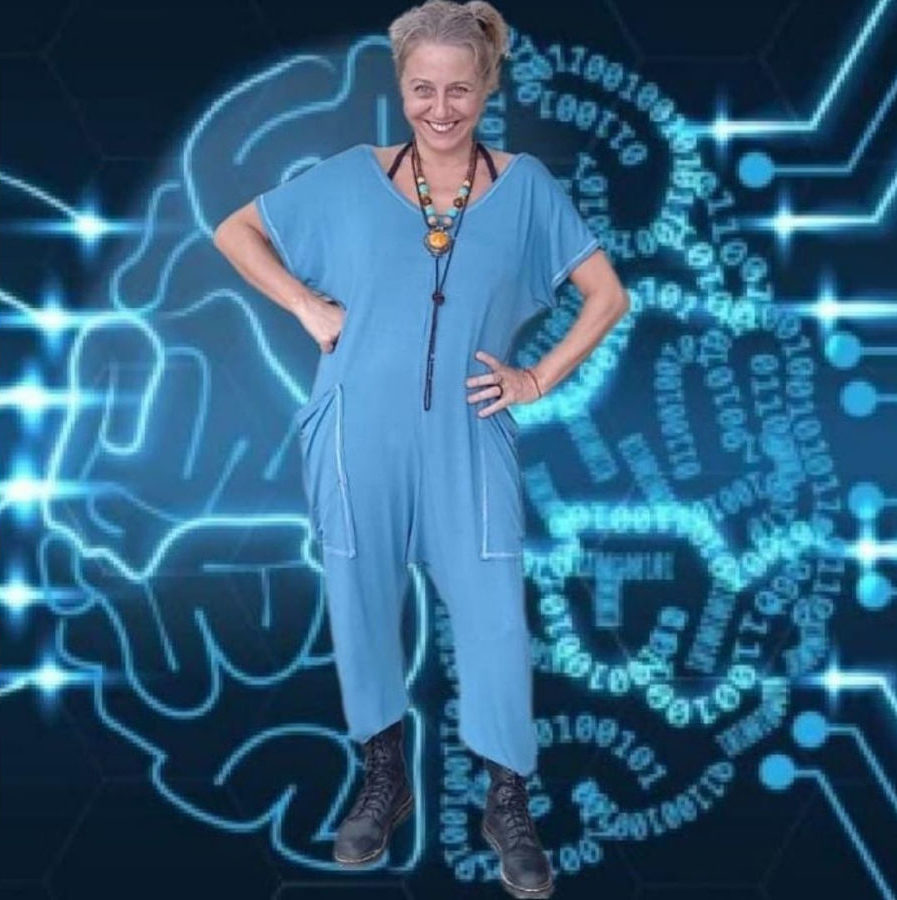
Fabiane Borges is a Clinical Psychologist, Researcher, Curator, Essayist. She researches the interrelation between Subjectivity, Art and Technoscience. She develops the SACIE / INPE – A research platform in Space Art and Space Sciences & artistic residencies held at the National Institute for Space Research. She has also done post-doctoral research in Art and Technology at PPGAV / UFRJ at NANO (Nucleus for Arts and New Organisms) and a doctoral internship at Goldsmiths University of London. She is a collaborator and researcher at the Diversitas / FFLCH / USP).
SACI-E: https://sacieartscience.wordpress.com/
TECNOXAMANISMO: https://tecnoxamanismo.wordpress.com/
PANDEMIC DREAMS ARCHIVE: https://archivedream.wordpress.com/
Youtube channel: https://www.youtube.com/antennarush
Instagram: https://www.instagram.com/antenna_rush/
Davis Cook - Illuminating Africa’s Space Heritage
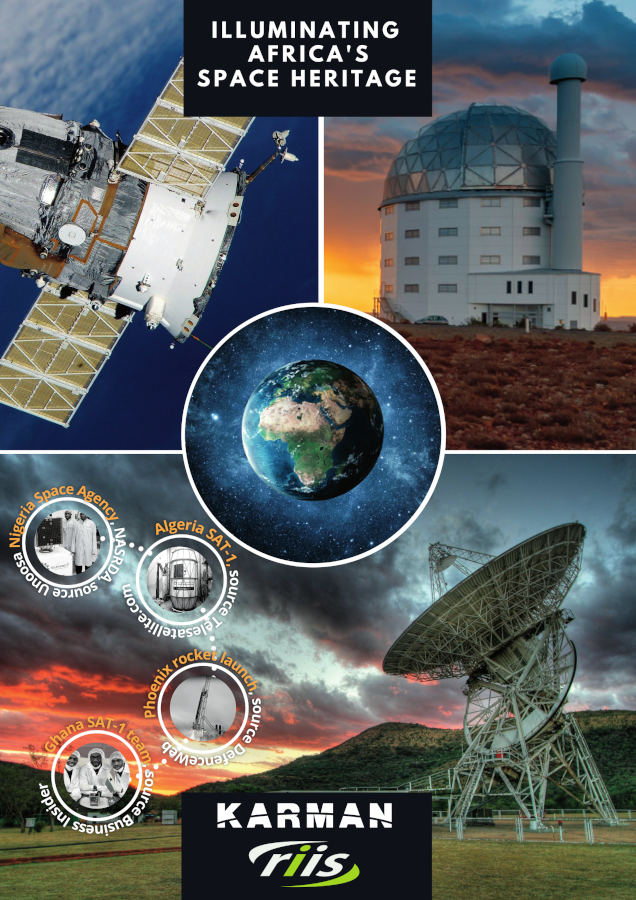
Humans have forever been curious about what lies beyond our skies. As our knowledge has developed over time, fable and the imagined have been replaced by discovery and fact. In the twentieth and twenty-first centuries, activities in space – from observations via powerful telescopes, and exploration via the deployment of spacecraft and satellites into orbit, to the ability to capture and interpret data observed from space – have been growing exponentially.
Today, multiple countries and commercial organisations have mobilised significant investment into the space sector. Some countries have been better able to do this than others. The world’s most dominant economies are well-equipped to invest in space research and development activities. Wealth, development and military sophistication have become the driving factors of this new space economy. The result is a widening gap – an orbital divide, if you will – between those who can and those who cannot quite yet make the investment in the space sector. For Africans, it can feel very much as if we are on the wrong side of this divide, watching from the side-lines as dominant players around the world jostle to lead the way in space-related development.
It might come as some surprise to learn that the African continent has, in fact, a very long history of contribution toward the global space sector. Much of what Africa has pursued and achieved in this field is unknown, downplayed and ignored. While several initiatives have been undertaken to address this challenge, their success is not yet reflected through a more visible and prominent presence of the African space sector on the global stage. The main goal of this project is to elevate awareness around the rich space history of Africa, highlighting the role and importance that African space programmes have played in the growth and relevance of the global space economy, and to form part of an effort to popularise space related activities more broadly. This presentation will contain a summary of insights and personal stories gathered from in-depth interviews with various thought leaders and space sector experts, who have actively been involved in building Africa’s space heritage. These insights will be complimented with findings obtained from desktop research, capturing an overview of the history of space programmes in Africa, along with the socio-economic impact that these initiatives have had. Lastly, an overview of the present state of the African space sector will be presented, along with vision for the future of space in Africa.
Davis Cook
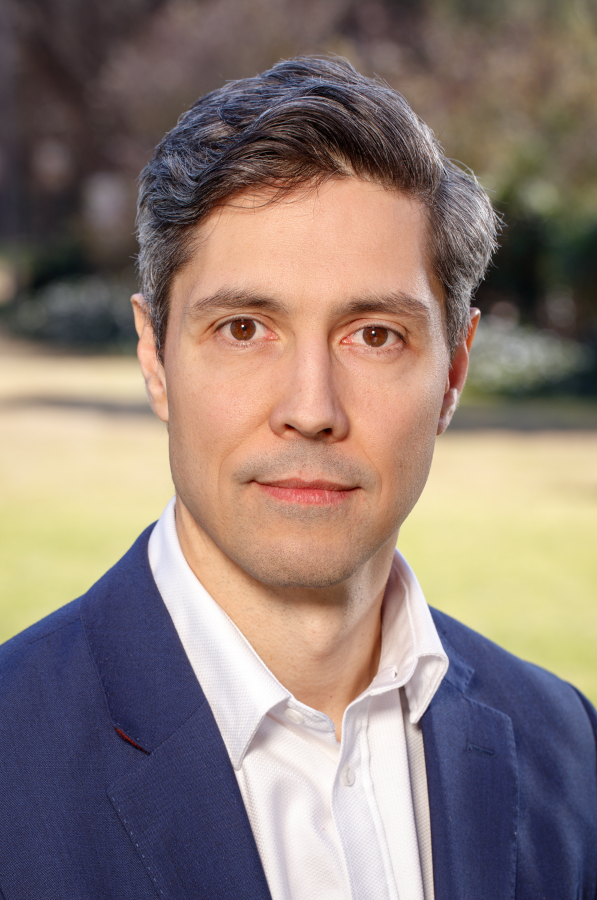
Davis Cook is the CEO at the Research Institute for Innovation and Sustainability (RIIS). With a long history in strategy consulting for corporates, government services and start-ups across more than 30 countries, Davis has been leading and advising global organisations since 2011. Davis has passion for the role that innovation plays in both business and social progress, and is intent on seeking out innovative ways to build a better world.
– RIIS Website: https://www.enablinginnovation.africa
– RIIS Facebook:
– RIIS LinkedIn: RIIS – Research Institute for Innovation and Sustainability: My Company | LinkedIn
– Karman Project Website: The Karman Project | For those who dare to dream of the stars
– Karman Project Instagram: The Karman Project (@thekarmanproject) • Instagram photos
and videos
– Africa Earth Observation Challenge: Home – Africa Earth Observation Challenge (eochallenge.africa)
Rohini Devasher - One Hundred Thousand Suns - How closely can we know our nearest star?
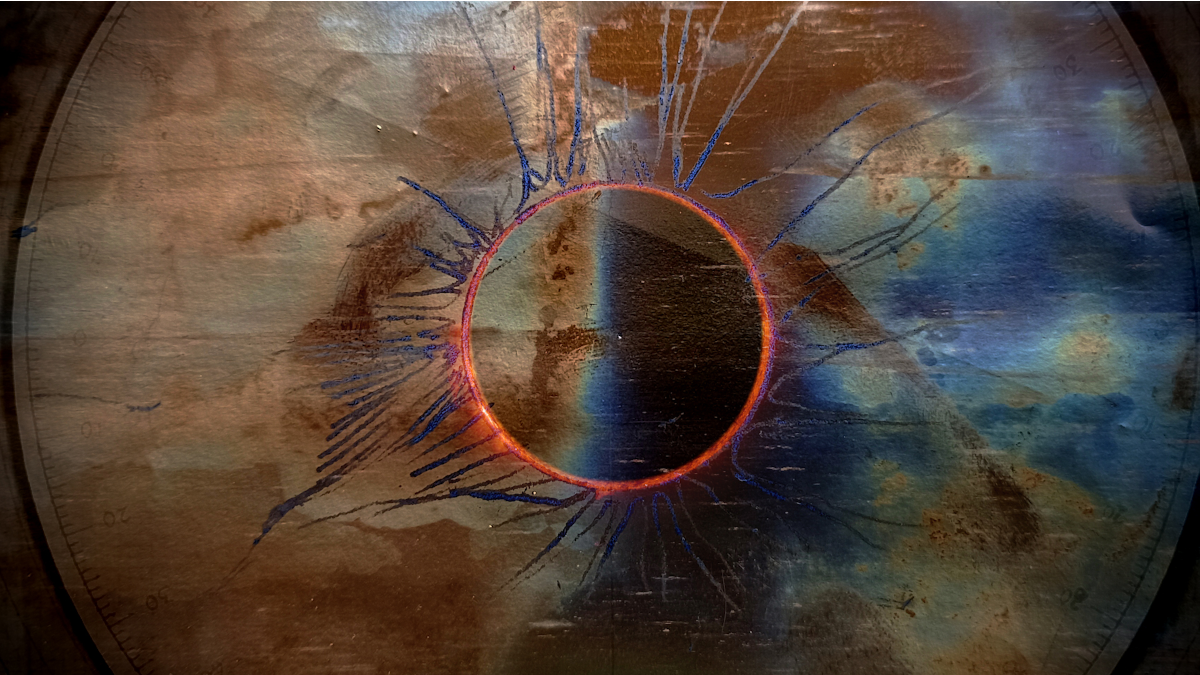
Rohini Devasher, "Hundred Thousand Suns" - Paradigm 2 (Still Frames) 2022_DaC_ODI_Residency
Every day, weather permitting, since 1904, the staff at the Kodaikanal Solar Observatory in India, have recorded images of our Sun.
More than 100 years of solar data.
Almost 11 solar cycles.
More than 157,000 distinct portraits of our nearest star.
In this talk, artist Rohini Devasher takes us through her most recent work, One Hundred Thousand Suns a 4 channel film installation that brings into conversation the geometry of the Earth, Moon and Sun, alongside conjunctions of event and site.
Poetic, speculative and deliberately discrete, One Hundred Thousand Suns is another kind of rendering of the Sun. Assembled from data both historical and contemporary, it foregrounds the reality that the site, the observer, and the methods of observation and collection may produce multiple readings and avatars of data.
The trajectory of the Sun’s observations, beginning with hand drawn sun spots on small disks of paper and glass photographic plates from the archives from the Kodaikanal Solar Observatory, data sets from NASA’s Goddard Space Flight Center, to the artist’s own data – including drawings, video and interviews with eclipse chasers, are navigated to explore the complexities of observational astronomy, and the ways in which ‘seeing’ is strange, wondrous, and more ambiguous than one might imagine.
Rohini Devasher
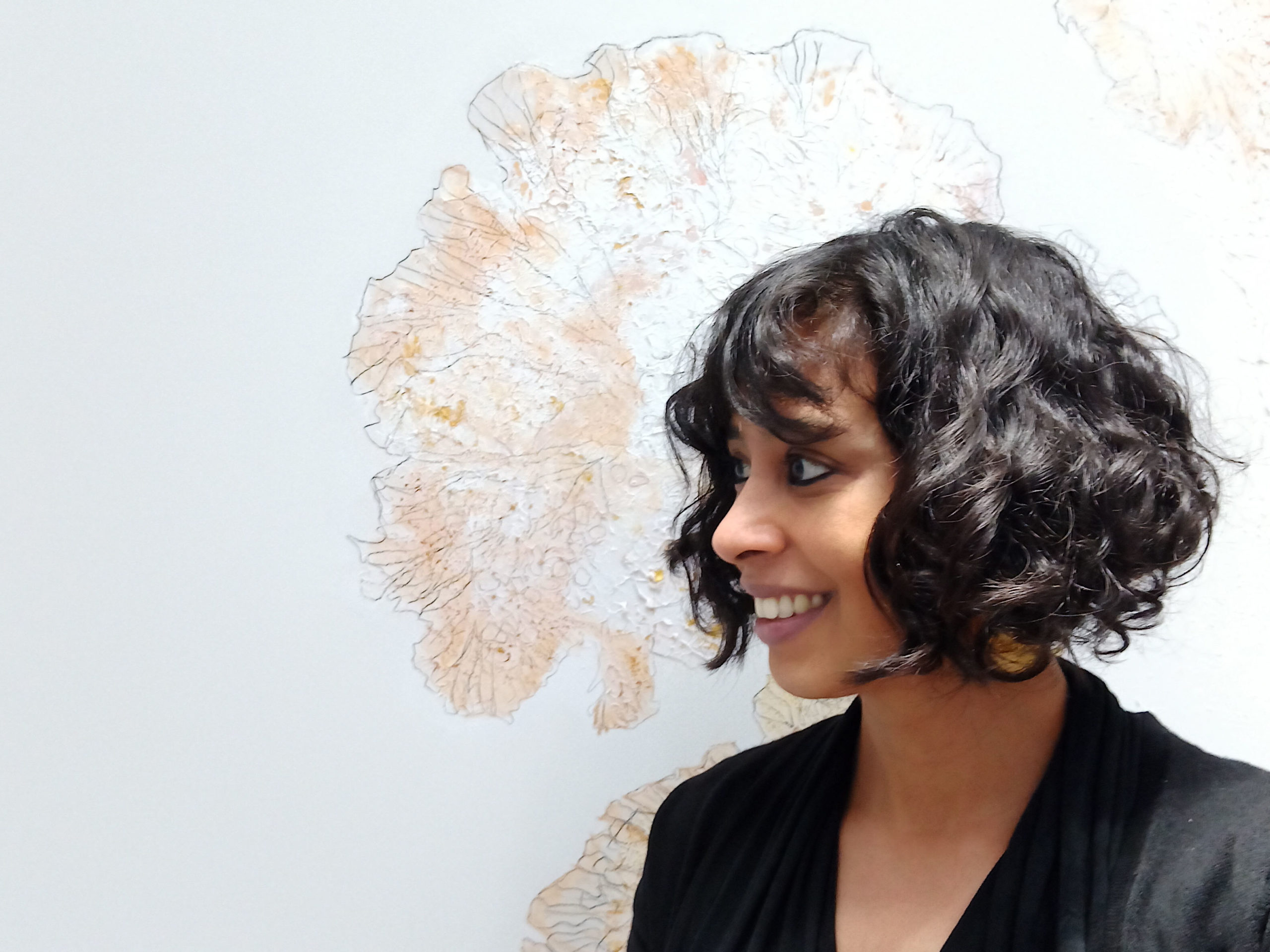
Devasher has trained as a painter and printmaker, and works in a variety of media including, video, prints and site-specific drawings. Her films, prints, sounds, drawings, mappings the antagonism of time and space; walking the fine line between wonder and the uncanny, foregrounding the ‘strangeness’ of encountering, observing and recording both environment and experience.
Her work has been shown at the Open Data Institute London (2022), Rubin Museum, New York (2021-22), the Sea Art Festival, Busan (2021), Goethe Institut Mumbai (2021), Vienna Academy of Fine Art (2021), the Kunst Leuven City Festival (2021) the 14 th Sharjah Biennial (2019), Kaserne Basel (2019) Museu d’Art Contemporani de Barcelona (MACBA) (2018), 7th Moscow Biennial (2017), the Spencer Museum of Art USA (2018,16), MAAT Museum of Art and Technology, Lisbon (2016), ZKM, Karsruhe (2016), Bhau Daji Lad City Museum in Mumbai (2016, 2018) Singapore Art and Science Museum (2016), Whitechapel Gallery, London (2016), and the 5th Fukuoka Asian Art Triennial (2014), the 1st Kochi Biennale (2012), among others.
Devasher has been an artist in residence at Cove Park 2022-23 as part of the City as a Spaceship Collective , The Open Data Institute (ODI), London (2021- 22), Five Million Incidents, 2019-2020 supported by Goethe-Insitut / Max Mueller Bhavan in collaboration with Raqs Media Collective (2019), The Owners Cabin Residency, (26 days on board an Oil Tanker from Fiji to Singapore 2018), Spencer Museum of Art, Kanasa USA (2016), The Anthropocene Curriculum: The Technosphere Issue, HKW Berlin (2016), Fukuoka Asian Art Museum (2014) and the Max Planck Institute for The History of Science, Berlin (2012).
Recently concluded projects include One Hundred Thousand Suns a new 4 channel film installation commissioned by Data as Culture (DaC) the art programme of the Open Data Institute (ODI).
www.rohinidevasher.com @rohinidevasher
Michelle Hanlon - Why Do We Care About Bootprints on the Moon?
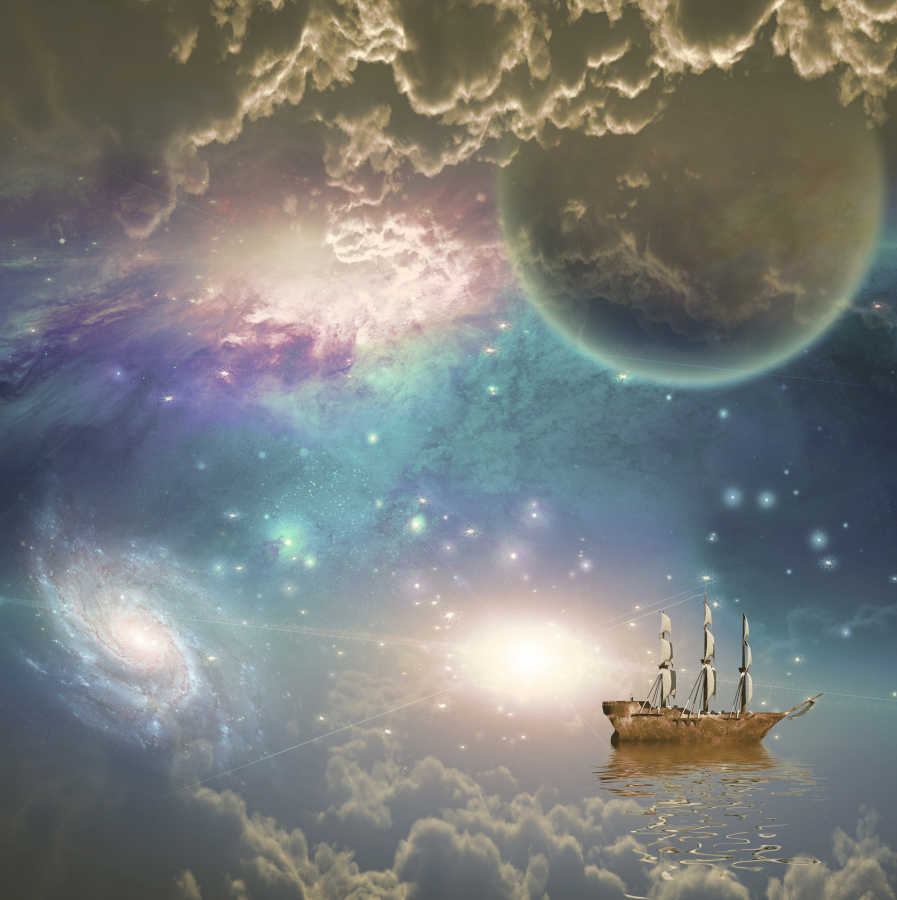
The 2020s will be recognized as the decade humans transitioned into a truly space-faring species that utilizes space resources to survive and thrive both in space and on Earth. It is up to us to make sure that we make this transformation sustainably and successfully. The first step to assuring the future is to protect the past. The fact of the matter is that humans would not have made it to the Moon without contributions from diverse cultures throughout our short history. We would do well to remember that as we work to fill in the current gaps in space law. This presentation will use the Outer Space Treaty as a springboard for discussion of how we can universalize space exploration and resource utilization to better all of humanity.
Michelle Hanlon
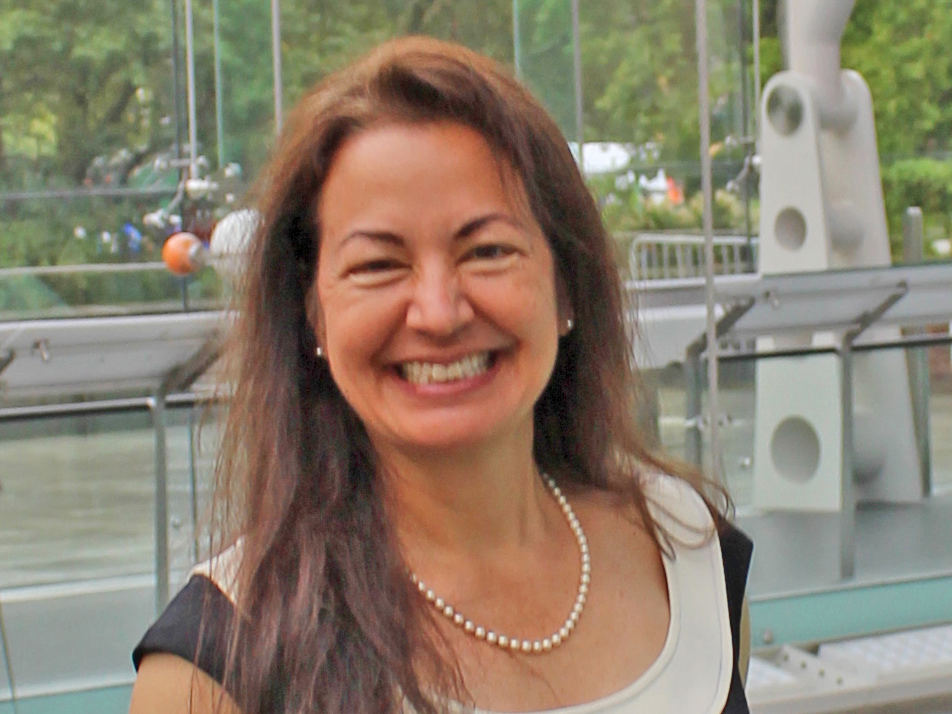
Michelle is Co-Director of the Center for Air and Space Law at the University of Mississippi and Editor-in-Chief of the Journal of Space Law, the world’s oldest law journal dedicated to the legal issues arising out of human activities in outer space.
Michelle is a Co-Founder and President of For All Moonkind, Inc., a nonprofit corporation that is the only organization in the world focused on protecting human cultural heritage in outer space. She was instrumental in the development of the One Small Step Act in the United States. For All Moonkind has been recognized by the United Nations as a Permanent Observer to the United Nations Committee on the Peaceful Uses of Outer Space. Michelle is the President of the National Space Society, a partner at ABH Space Law and an Advisor to The Hague Institute for Global Justice Off-World Approach project.
forallmoonkind.org – Instagram @forallmoonkind
Eduardo Kac - Adsum, an artwork for the Moon
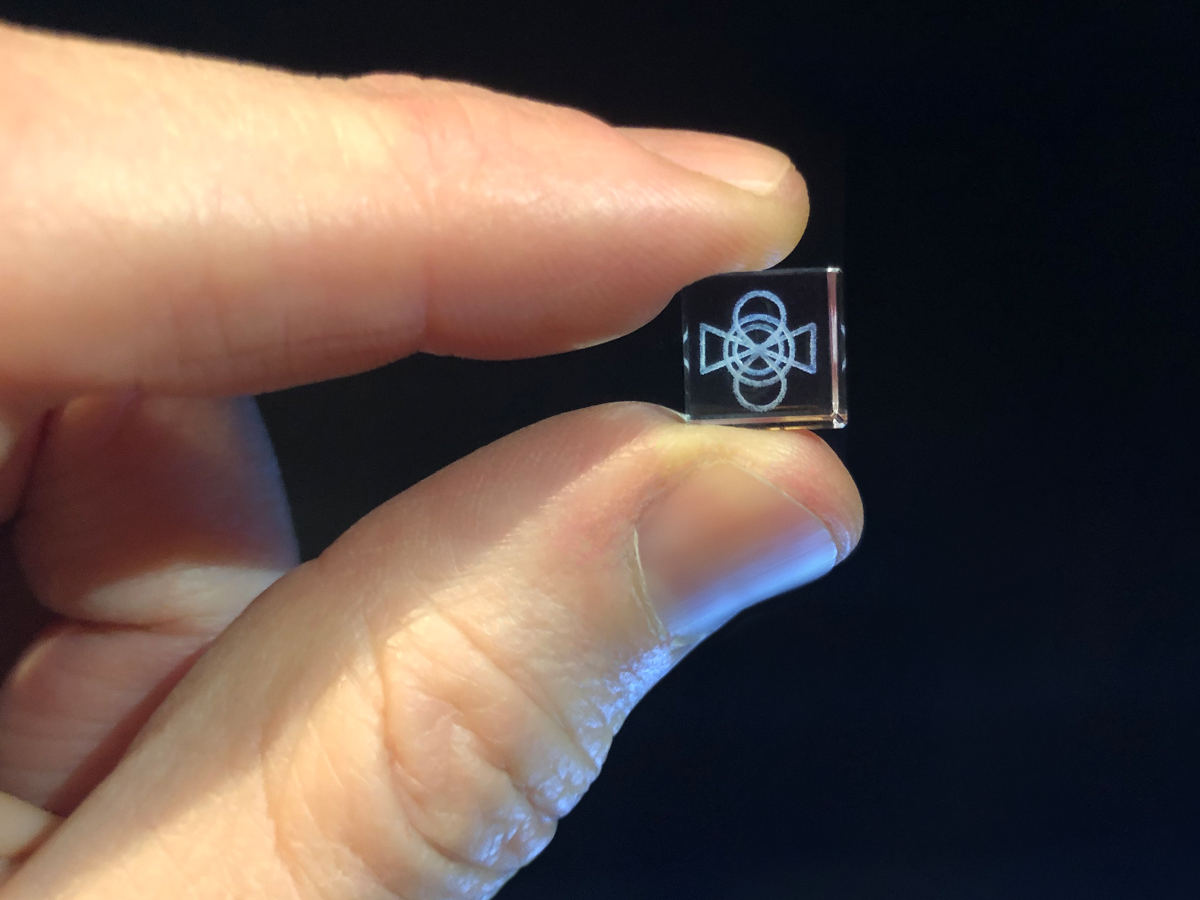
In this presentation, artist Eduardo Kac will discuss his artwork Adsum, specially conceived for the Moon and currently (2021-2022) orbiting the Earth aboard the International Space Station. Kac will discuss the materiality of the work, its symbolic implications, and its relationship to our closest celestial neighbor. Ultimately, Kac will present his vision for what he calls “cislunar culture”.
Eduardo Kac
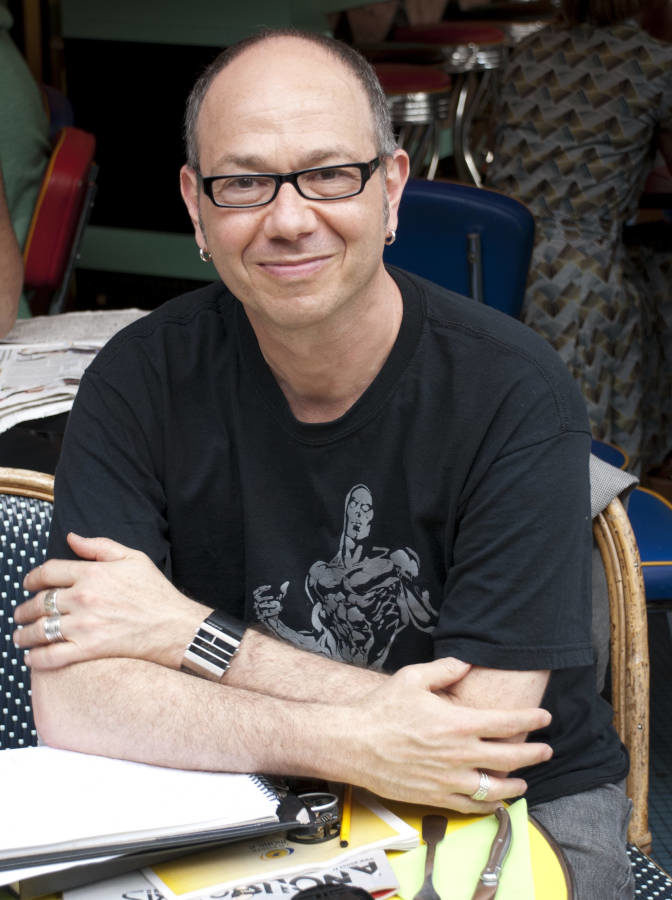
Eduardo Kac is internationally recognized for his groundbreaking work in contemporary art and poetry. In the early 1980s, Kac created digital, holographic and online works that anticipated the global culture we live in today, composed of ever-changing information in constant flux. In 1997 the artist coined the term “Bio Art,” igniting the development of this new art form with works such as his transgenic rabbit GFP Bunny (2000) and Natural History of the Enigma (2009), which earned him the Golden Nica, the most prestigious award in the field of media art. GFP Bunny has become a global phenomenon, having been appropriated by major popular culture franchises such as Sherlock, Big Bang Theory and Simpsons, and by writers such as Margaret Atwood and Michael Crichton. In 2017, Kac created Inner Telescope, a work conceived for and realized in outer space with the cooperation of French astronaut Thomas Pesquet. Kac’s singular and highly influential career spans poetry, performance, drawing, printmaking, photography, artist’s books, early digital and online works, holography, telepresence, bio art, and space art. Kac has also authored or edited several books, including Telepresence and Bio Art — Networking Humans, Rabbits and Robots (University of Michigan Press, 2005). Kac’s work has been exhibited internationally at venues such as New Museum, New York; Pompidou Center, Paris; MAXXI-Museum of XXI Century Arts, Rome; Mori Art Museum, Tokyo; Reina Sofia Museum, Madrid; Power Station of Art, Shanghai; and Seoul Museum of Art, Korea. Kac’s work has been showcased in biennials such as Venice Biennale, Italy; Yokohama Triennial, Japan; Gwangju Biennale, Korea; Bienal de Sao Paulo, Brazil; and Bienal de Habana, Cuba. His works are in major collections such as Museum of Modern Art-MoMA, New York; Tate Modern, London; Victoria & Albert Museum, London; Museum Les Abattoirs—Frac Occitanie Toulouse, France; Valencian Institute of Modern Art-IVAM, Spain; Museum ZKM, Karlsruhe, Germany; and Museum of Contemporary Art of São Paulo, among others. Kac was elected as full member to the IAF (International Astronautical Federation) Technical Activities Committee for the Cultural Utilisation of Space (ITACCUS).
https://www.ekac.org
Marcus Neustetter & Team - Imaginary Futures
In the process of exploring a collective understanding of our relationship to space, the Imaginary Futures project brings together an experimental dialogue of creative producers from different disciplines and contexts to look at what our shared peripheral perspective of a space-future might look like.
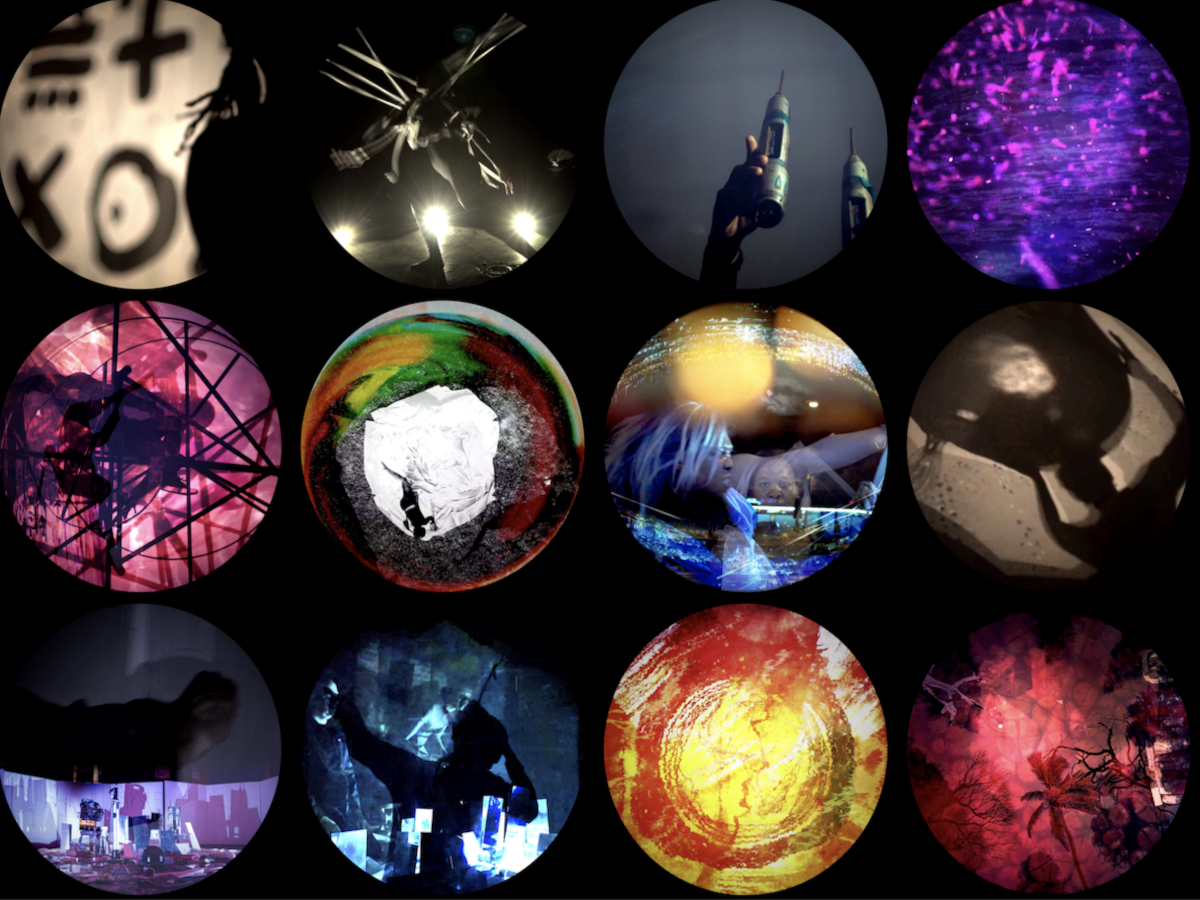
Imaginary Futures, image Marcus Neustetter
Ale de la Puente - Five missions to explore the center and its periphery
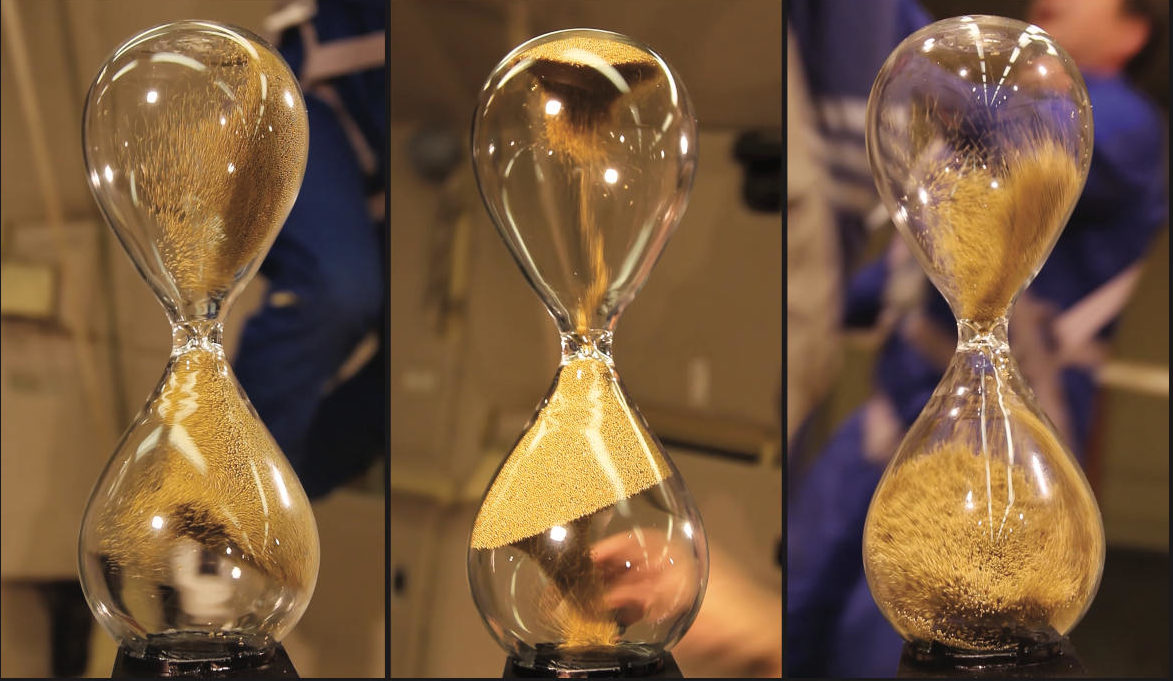
Ale de la Puente, Un infinito, 2016 - Silent video HD, 9:16 - Duration 02'22''; (still images) - Sand clock in zero gravity
We have a mission: to explore the center.
Is there a center, even when everything is in motion? The center is only observable outside its own domain. Then the mission is: To be in orbit, searching in the periphery.
How to get there? Which way will we return? Where to come back? When everything seems to change, emerging in one form and vanishing in another.
The talk will approach my artwork dealing with the notions of space, time, and the center through five space-time missions.
Ale de la Puente
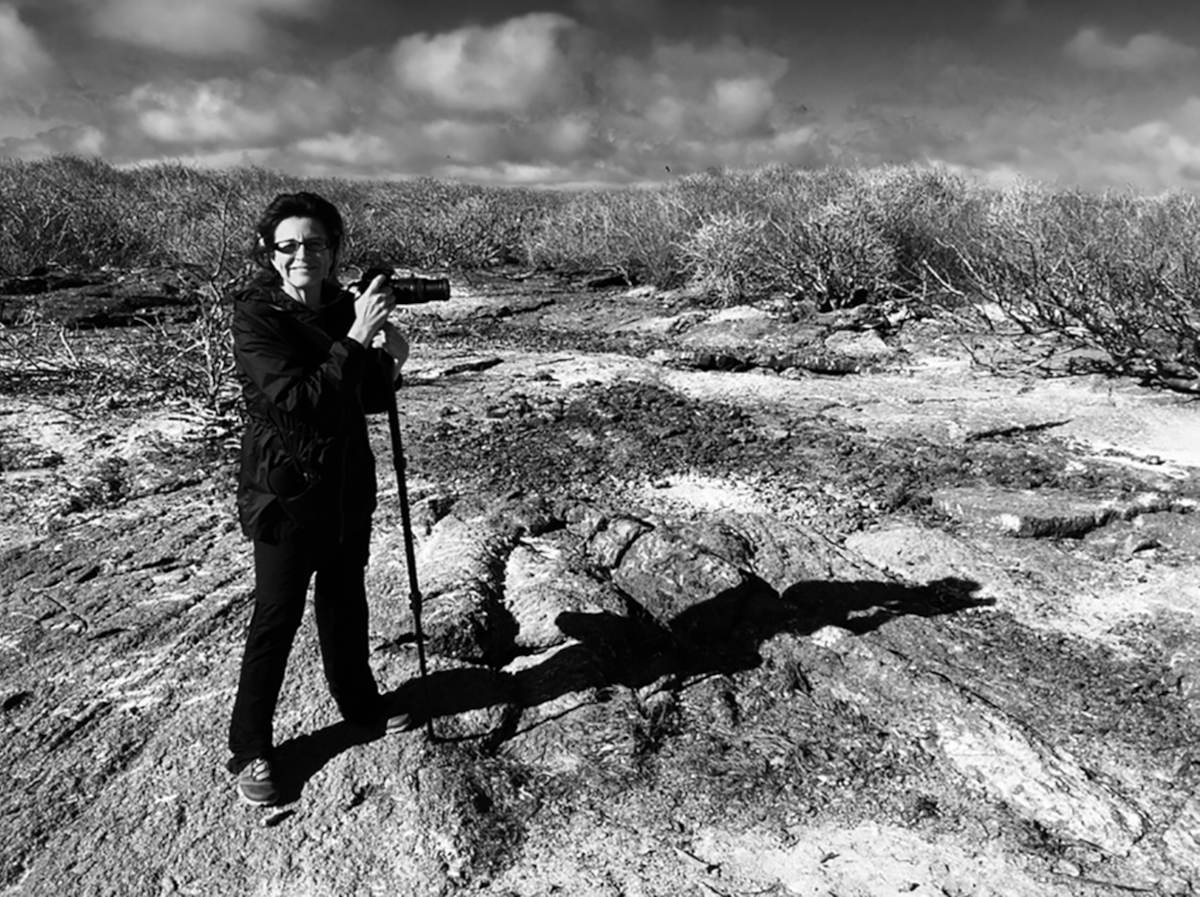
Ale de la Puente is an artist with a diverse background and continuum studies, including boatbuilding, navigation, astronomy, physics, and philosophy. She is known for her poetic and conceptual explorations of time and space across a wide field of mediums, ranging from installations and sculptures to drawings, photography, and video, including art & science expeditions in search of symbolic natural phenomena, how we signify them, and how we relate to the given meaning.
She collaborates with the Institute of Astronomy and the Institute of Nuclear Sciences of UNAM (Universidad Nacional Autónoma de México), Roscosmos, Kosmica Institute, and the National Institute of Acheology and History.
She has exhibited her work nationally and internationally including, Museo de Arte e Historia de Guanajuato, Laboratorio de Arte Alameda, Museo de Arte Carrillo Gil, Museo de Arte Moderno MAM, (Mexico); Polythecnic Museum (Moscow); KSEVT (Slovenia); Rubin Center (EUA); Centro Cultural Montehermoso,Vitoria-Gasteiz; Museo Reina Sofía, Madrid, (Spain); Bass Museum of Art, (Miami, Florida); Tokyo
Wonder Site, (Tokyo, Japan) Mosaicon Gallery, (Lodz, Poland); TCNJ Art Gallery, New Jersey; MALBA, (Buenos Aires, Argentina); Museo de Arte del Banco de la República, (Bogota, Colombia); amongst others. Her work is part of public and private collections.
www.aledelapuenteartist.com
IG @aledelapuente
Yoko Shimizu - Exploring new frontiers of art, space, and biology
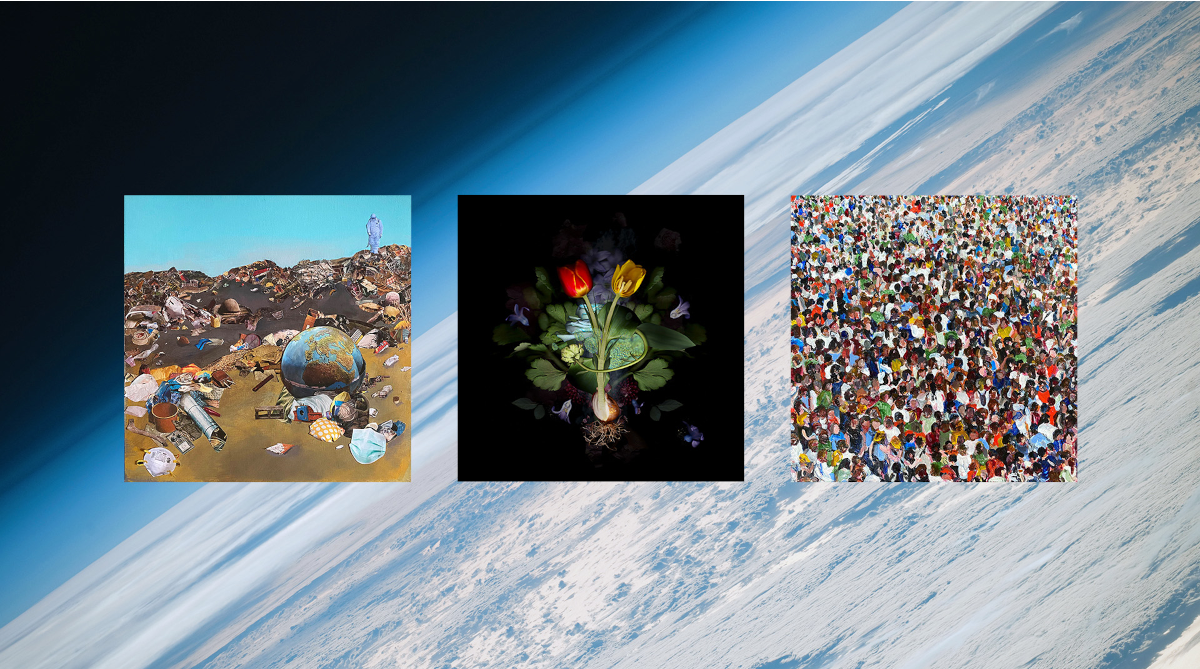
The beautiful mechanism of biology and nature provide inspirations for the future of humanity. These inspirations help us build global awareness of our home planet and explore creativity in the far reaches of outer space. How can we better understand nature, our mother planet, and the universe that we live in? Can we learn from nature and co-create with space?
As an artist and biochemistry researcher, Yoko Shimizu develops innovative technologies and artworks that combine science and art – working with companies, government agencies, museums, and universities around the world. She is also a co-founder and co-director of Beyond Earth, exploring new frontiers of art, space, and biology.
In this presentation, we explore the latest projects on how biological research drives innovation in creative space projects. From the Space Art DNA Capsule that stores high-resolution artworks in DNA aboard the International Space Station to large-
scale sculpture designed for spaceflight inspired by aquatic organisms using AI, we look into the future of creative expressions.
Yoko Shimizu
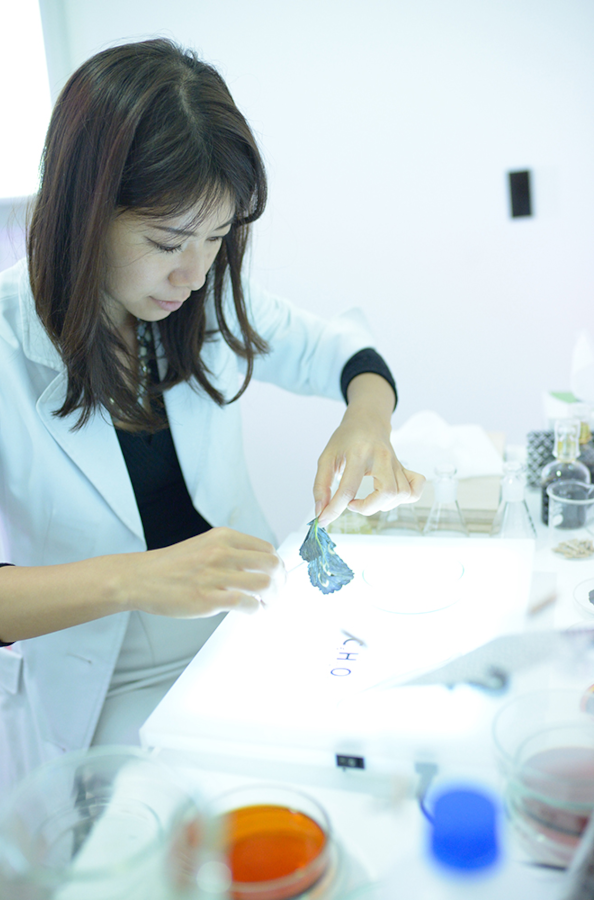
Artist and key researcher, Ars Electronica Futurelab; Director of technology and design, Beyond Earth
Yoko Shimizu is an artist and key researcher at Ars Electronica Futurelab with a background in biology and chemistry. She began her career as a creative director and consultant for corporations, and later founded her lab, where she developed innovative technologies and installations that combine science and art. Yoko works with companies, government agencies, museums, and universities around the world. She is also a speaker and lecturer at international events, conferences, and educational institutions. Yoko is a co-founder and director of technology and design in Beyond Earth.
Beyond Earth: beyond-earth.org — @ beyondearth.art
Yoko Shimizu: yokoshimizu.com — @yokoshimizuart
Ars Electronica: ars.electronica.art
Partners
Global Periphery is part of More-Than-Planet project, an international cooperation project between Stichting Waag Society (NL), lead partner, Zavod Projekt Atol (SI), Ars Electronica (AT), Digital Art International ART2M (FR), Northern Photographic Centre (FI) and Leonardo/Olats
(FR).
Collaborations with Chaire arts & sciences, Ecole polytechnique and Ensad (FR)
Endorsed by ITACCUS, the Committee for the Cultural Utilisation of Space of the IAF-International Astronautical Federation.
Hosted in partnership by Cité Internationale des Arts.
Co-funded by the European Union.
Views and opinions expressed are however those of the author(s) only and do not necessarily reflect those of the European Union. Neither the European Union nor the granting authority can be held responsible for them.
Leonardo/Olats received the support from the Daniel and Nina Carasso Foundation, the Canadian Cultural Centre in Paris and the Institut Français India.





Leonardo/Olats
Observatoire Leonardo des Arts et des Techno-Sciences
À propos / About | Lettre d'information Olats News



Pour toute (re)publication, merci de contacter / For any (re)publication, please contact Annick Bureaud: info@olats.org
Pour toute question concernant le site, merci de contacter / For any issue about the website, please contact: webmaster@olats.org
Design Thierry Fournier
© Association Leonardo 1997-2022